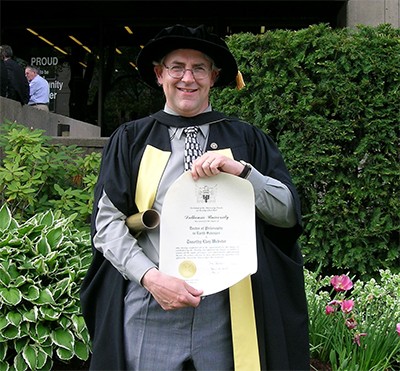Tim Webster

Ph. D. Thesis
The Application of High-Resolution Lidar Dem Data to Landscape Evolution: An Example from the Fundy Basin, Nova Scotia, Canada
(PDF - 12.6 Mb)
High-resolution laser altimetry (LIDAR) is applied to geological problems such as bedrock and surficial mapping and local surface processes in the Fundy Basin of Nova Scotia. Two GIS-based validation methods were developed to compare points and derived "bald earth" DEM from two LIDAR acquisition methods with checkpoints from GPS and traditional surveys. A systematic height error between flight lines for one of the LIDAR acquisition methods was detected that related to the calibration procedures used in the survey. As a result, an area of 350 km2 is the focus of this thesis where DEM errors are less than 0.2 m (1 ) in open areas and less than 1.3 m (1 ) in densely vegetated terrain.
Subtle topographical differences among three flow units of the Jurassic North Mountain Basalt (NMB) are clearly visible on a LIDAR DEM. Boundaries between flow units extracted from the DEM were verified by field mapping. The variable resistance of the flow units to erosion, documented by shatterbox experiments and down-core fracture density data, has a measurable control on incision by post-glacial consequent streams. Several ring structures in the lower flow unit, distinguishable only in the LIDAR data, are interpreted to be the remnants of rootless phreomagmatic cones. Two new sets of surficial landforms have been identified that indicate ice was directed northwestward into the Bay of Fundy during the late stages of glaciation depositing a blanket of till over half of the catchments draining the NMB into the bay. In catchments where till cover is thick, greater surface run-off and weaker infiltration increases incision by as much as 43% for a given flow unit. Till cover therefore is expected to impede the achievement of steady state conditions and may also delay the onset of stream power law relationships in larger catchments until till cover has been effectively stripped. This thesis demonstrates through a range of examples that the high-precision and resolution of LIDAR can improve our understanding of how landscapes form and evolve.
Keywords:
Pages: 229
Supervisor: J. Brendon Murphy



